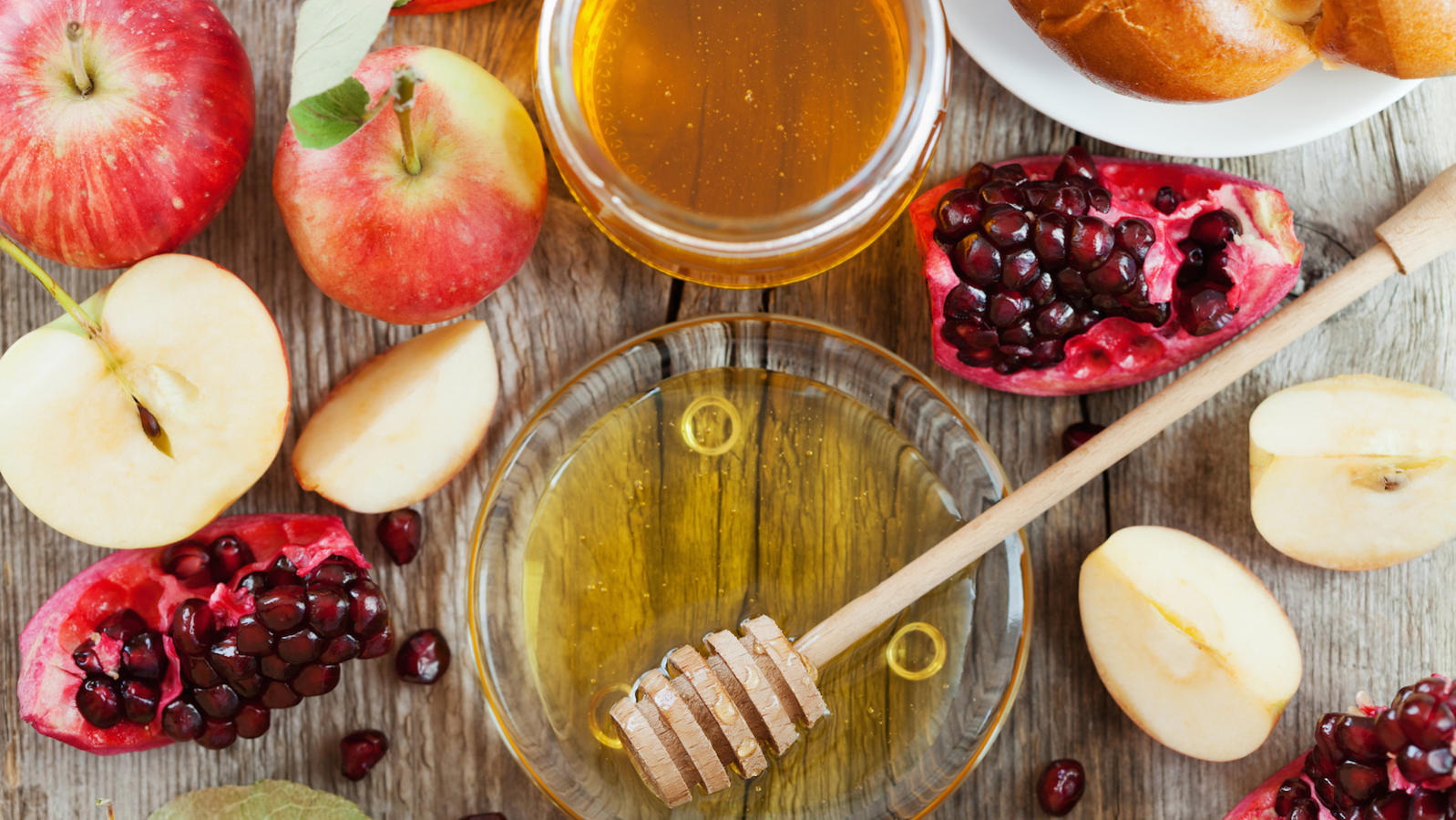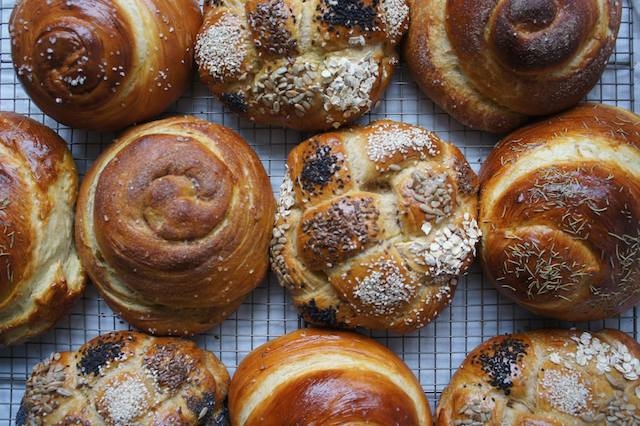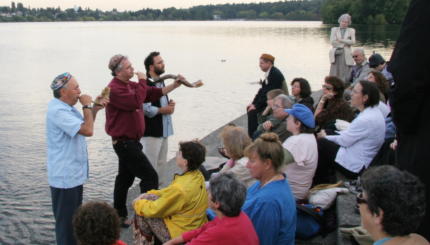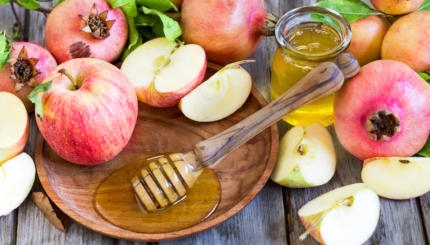Rosh Hashanah, the Jewish new year, is a fall holiday, taking place at the beginning of the month of Tishrei, which is actually the seventh month of the Jewish year (counting from Nisan in the spring). It is both a time of rejoicing and of serious introspection, a time to celebrate the completion of another year while also taking stock of one’s life.
The High Holiday Period
The two days of Rosh Hashanah usher in the Ten Days of Repentance (Aseret Yemei Teshuvah), also known as the Days of Awe (Yamim Noraim), which culminate in the major fast day of Yom Kippur, the Day of Atonement. The Days of Awe represent the climax of a longer process. Starting at the beginning of the previous month, called Elul, the shofar is traditionally sounded at the conclusion of the morning service. A ram’s horn that makes a trumpet-like sound, the shofar is intended as a wake-up call to prepare for the Tishrei holidays. One week before Rosh Hashanah, special petitionary prayers called Selichot are added to the ritual. Rosh Hashanah itself is also known as Yom Hadin or the Day of Judgment, on which God opens the Books of Life and Death, which are then sealed on Yom Kippur.
Rosh Hashanah History
The origins of Rosh Hashanah may be sought in a royal enthronement ritual from biblical times, though the Bible itself never mentions the “New Year” or “Day of Judgment” aspects of the holiday. Even though Rosh Hashanah falls in the seventh month, later rabbinic tradition decided to designate it the beginning of the year. Although the origin of this tradition may have been adopted from the Babylonians, the rabbis imbued it with Jewish significance as the anniversary of the day on which the world was created, or of the day on which humanity was created. Another explanation can be found in the significance of Tishrei as the seventh month, hence the Sabbath of the year.
Celebrating Rosh Hashanah At Home
With your help, My Jewish Learning can provide endless opportunities for learning, connection and discovery.
The challah (traditional bread) that is eaten for the Rosh Hashanah season is round, symbolizing the eternal cycle of life. The challah is traditionally dipped in honey, symbolizing the hopes for a sweet New Year. The same is done with apples, which are made even sweeter with the addition of honey. Some people avoid eating nuts at this time, since according to a somewhat convoluted gematria (mystical numerical interpretation) the Hebrew words for nut (egoz) and sin (het) have the same numerical value.
Rosh Hashanah Liturgy
The prayer book for the High Holidays is called the Mahzor. Three unique sets of prayers are added to the morning service during Rosh Hashanah. These are known as Malkhuyot, which address the sovereignty of God, Zikhronot, which present God as the one who remembers past deeds, and Shofarot, in which we stand in nervous anticipation of the future.
Each of these sections culminates in the blasts of the shofar, the most potent symbol of the holiday. The shofar is alluded to in the most memorable Torah reading for the holiday, the Akedah or Binding of Isaac (Genesis 22). The story and the shofar serve as reminders of the covenant between God and the people of Israel, carrying with them the message of sacrifice, hope, and continuity. Among the popular traditions associated with the holiday is a ceremony performed on the afternoon of the first day of Rosh Hashanah called Tashlich, when people throw crumbs or pieces of bread, symbolizing their sins, into flowing water.
Rosh Hashanah’s Theology and Themes
This is the time of year during which we are to atone for both our individual — and on Yom Kippur, our communal — sins committed over the course of the previous year, before God literally closes the books on us and inscribes our fates for the coming year. God’s rule over humanity and our need to serve God are stressed time and again over the course of the holiday.
Want to learn more about the High Holidays? Sign up for a special High Holiday prep email series.
challah
Pronounced: KHAH-luh, Origin: Hebrew, ceremonial bread eaten on Shabbat and Jewish holidays.
Rosh Hashanah
Pronounced: roshe hah-SHAH-nah, also roshe ha-shah-NAH, Origin: Hebrew, the Jewish new year.
shofar
Pronounced: sho-FAR or SHO-far, Origin: Hebrew, a ram’s horn that is sounded during the month of Elul, on Rosh Hashanah, and on Yom Kippur. It is mentioned numerous times in the Bible, in reference to its ceremonial use in the Temple and to its function as a signal-horn of war.
Tishrei
Pronounced: TISH-ray, Origin: Hebrew, Jewish month, usually coinciding with September-October.
Torah
Pronunced: TORE-uh, Origin: Hebrew, the Five Books of Moses.
Mahzor
Pronounced: MAKH-zore, Origin: Hebrew, literally “cycle” the mahzor is the special prayer book for the High Holidays, containing all the liturgy for Rosh Hashanah and Yom Kippur.




